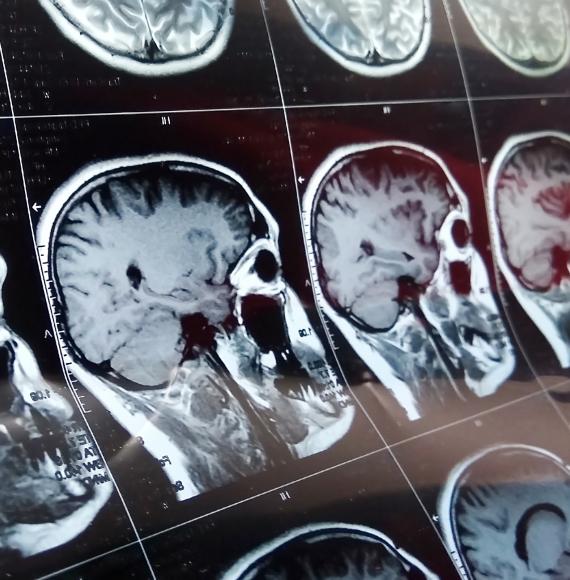Stuart Waine of Spry Fox Networks explains why 4G coverage is not just nice to have inside hospital buildings and care homes but an essential part of hospital operation. This content was provided by Spry Fox Networks and editorially reviewed by National Health Executive.
Ask any healthcare organisation about their biggest challenges and they will invariably list the following: maintaining high standards of care, struggling with outdated technology, consolidation of departments/services, budget cuts, commercialisation of services and forging relationships with the community.
Consider this list carefully and it won’t take you long to realise that reliable mobile communications sits at the heart of their fulfilment, particularly where public safety is concerned.
As the Covid-19 crisis pushes hospitals and care homes to their absolute limits and with no let-up on the horizon, never has there been a greater need for uninterrupted voice and data coverage inside any healthcare buildings to co-ordinate safety-critical communications and to quickly mobilise outreach teams.
Communications overhaul
Critical communication services are currently provided by Airwave using TETRA (Terrestrial Trunked Radio) technology. The advantage of this network is that it facilitates uninterrupted coverage regardless of location, is able to penetrate thick building walls and is not blighted by coverage dead spots.
Its downside, however, is that the network struggles to support high-bandwidth voice and data services (4G) because the upload and download times are just too slow, a consequence of the low frequency band used.
As such there is a cross party initiative led by central government to replace Airwave with a new Emergency Services Network (ESN) that will run over 4G. This means that blue light services, law enforcement organisations and first response teams will be able to take advantage of digital technologies and reduce dependency on outdated technologies such as pagers, fax machines etc. which cost the NHS millions of pounds to run and maintain.
The in-building coverage challenge
While the network chosen to facilitate ESN is focused on upgrading its existing outdoor infrastructure to meet coverage and capacity demands, a far bigger challenge will be ensuring adequate levels of uninterrupted coverage inside large buildings in the first place.
 Significantly improved 4G coverage would allow blue light services, law enforcement organisations and first response teams will be able to take advantage of digital technologies
Significantly improved 4G coverage would allow blue light services, law enforcement organisations and first response teams will be able to take advantage of digital technologies
The higher frequency bands used for 4G have much shorter propagation ranges than legacy voice-based networks and indoor signal strength is invariably weakened because modern building materials severely hinder the transmission of 4G. Thi,s combined with complex layouts and building architectures, causes coverage to become patchy and unreliable.
Hospitals in particular are prone to having poor to non-existent 4G coverage due to the sheer number of internal corridors, clinics, wards, stairwells and basement areas, all of which are notorious mobile black spots. Poor coverage is frustrating at the best of times, poor coverage in the midst of an international health crisis is inexcusable.
Taking the outside network indoors is easier than you think
The only way to overcome the 4G problem is to take the outside signal indoors using mobile signal boosters and antennas because mobile phone masts on their own are just not up to the job. The type of signal booster needed will depend on the size of the building in question; its location, how close it is to a mobile phone mast, the number of patients/staff requiring coverage, and the network(s) that need to be boosted.
This might sound like an arduous and expensive process with lengthy timescales, and up until about 18 months ago it was.
However, in 2018 Ofcom relaxed the rules governing the usage of mobile signal boosting equipment, so implementing equipment to improve voice and data coverage is now a straightforward process. The only limiting factor is that any deployed system must satisfy all technical requirements stipulated by Ofcom in the IR2102 specification. This means it must be network-specific, network-safe and not cause interference to any other networks. Unfortunately, not all systems meet these stringent requirements.
Ticking the regulator boxes
A product range that does tick all the boxes is available from mobile repeater specialists, Spry Fox Networks. The company works closely with the public sector and has recently installed an extensive end-to end system to facilitate high speed voice and data coverage at the P&J Arena, managed by Aberdeen City Council.
The company is also in the process installing a large system at the NHS Scottish National Blood Transfusion Service’s primary location, The Jack Copeland Centre, to provide urgently-needed coverage for operations at the centre.
What the future holds
It is becoming increasingly apparent that 4G is no longer a ‘nice to have’, but an integral requirement for every general mixed use, residential or commercial buildings for public safety purposes. What is unclear at this stage is where the responsibility lies. Nobody wants to be culpable by taking short cuts, and with no clear guidance on funding, NHS trusts and public sector organisations are faced with a moral dilemma in the short to medium term.
Mobile connectivity has always been a moving target and will become even more so as 5G gains momentum and ESN goes mainstream. Forward planning from a property owner/manager’s perspective is therefore essential to satisfy immediate expectations and future requirements because failure to take this into account could have very serious consequences.
Based in Swindon, Spry Fox Networks specialises in developing and commissioning end-to-end communications to enhance in-building mobile coverage for a range of industries including healthcare, care homes and local government organisations.
Services include providing mobile coverage solutions, technical consultancy and system design, development and deployment. In particular, in those areas where W-Fi security cannot necessarily be trusted or assured, such as home working, the deployment of such solutions ensures secure connectivity over one of the trusted UK mobile operators.
Get in touch with the experts at Spry Fox Networks to find out more about how their solutions can help you, either through email at [email protected] or through their website.



















